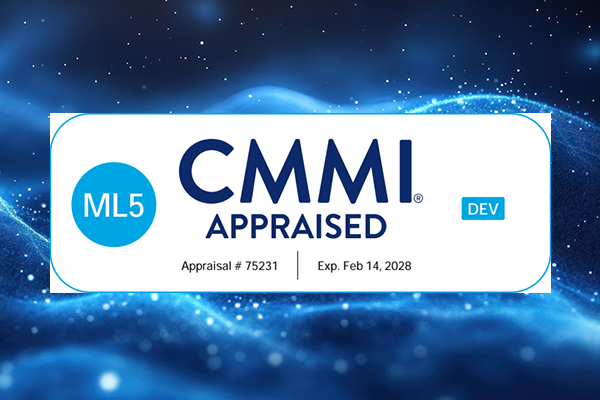Accelerate Outcomes
Modernize with solutions that address needs now while preparing your system to meet your mission in the future. Using our GoLean platform, our experts assess changing requirements, make data-driven decisions and implement secure, effective solutions while automating and building standardized templates based on no-code/low-code frameworks that put the power in your hands to address future needs. The result is modernization solutions delivered better, cheaper, faster and safer.
Application of GoLean and its Agile metrics enabled Karsun Solutions to be among the first 25 companies in the United States to achieve CMMI Level 5 (DEV) under the updated V2.0 (CMMI-DEV) appraisal model. This data-driven methodology empowers high performance outcomes across the organization through clear goals and fit to purpose practices.
We distilled an approach to enable active leadership through a process and a toolkit that together drives innovative approaches to shape and adapt team practices to achieve set goals. We call this approach GoLean.


4
Step Observe-Orient-Decide-Act Process
25+
Health & Diagnostic Visualizations
8
Statistical Models
40+
Automations
Agile Playbooks
Our teams start every project with a proven set of Agile methods and processes.
This learning process is based on the Observe, Orient, Decide, and Act (OODA) process. Also called the Boyd Cycle, this is a Department of Defense best practice which guides strategy so that “agility can be used to overcome raw power”.
to learn from execution data to decide on new innovations that guide people and improve methods.
Using OODA, one can pilot new methods (process changes and practice innovations), and then operationalize within and across teams in a large software development organization.


Tools & Frameworks
Jumpstart GoLean methods and the OODA process
To support the OODA learning process, we created 25+ health and diagnostic visualizations. These help Agile leaders identify observable stressors in achieving aspirational goals. Meanwhile, eight statistical models help teams orient and validate the fitness of new innovative methods. An additional 40+ automations serve as constraints, guardrails and nudges guiding teams’ actions within popular agile tools (such as Jira & Jenkins) and in our DevSecOps enabling frameworks and pipelines.
Using Cucumber and Selenium, popular automation testing tools, we facilitate acceptance test-driven development (ATDD) or behavior driven development (BDD). Duke provides an alternative approach to Cucumber’s (Gherkin’s) ‘requirements by example.’ Instead it manages data external to the scenario statements and thus allows developers and testers to perform user experienced based journey testing. This is completed as a series of scenarios that declaratively manage the cohesive dataset as a single unit and dynamically inject them during test automation. Such a data management strategy helps create multiple user journey tests with less clutter in code. This also enables regression testing suites for continuous testing at scale.
This enables DevSecOps teams to decouple a feature deployment from its release so that Developers can self-manage feature, potentially tested in production and incrementally roll out to users after its validation of its operational performance for reliability and efficiency in a shadow data network. It utilizes a low-code open source data pipeline tool to enable fine-grained data synchronization between legacy and modernized components such that developers can declaratively set deployment profile and policy for its roll out.
Accelerate the Authority to Operate (ATO) process. One solution is the Open Security Controls Assessment Language (OSCAL). OSCAL is a set of formats expressed in XML, JSON, and YAML developed by NIST. These formats provide machine-readable representations of control catalogs, control baselines, system security plans, and assessment plans and results. Integrating a GRC tool as part of the DevSecOps toolchain and using OSCAL for documenting all the controls automates most aspects of the ATO process enables us to do continuous ATO (cATO) and alleviates the documentation burden and most manual processes associated with it.



